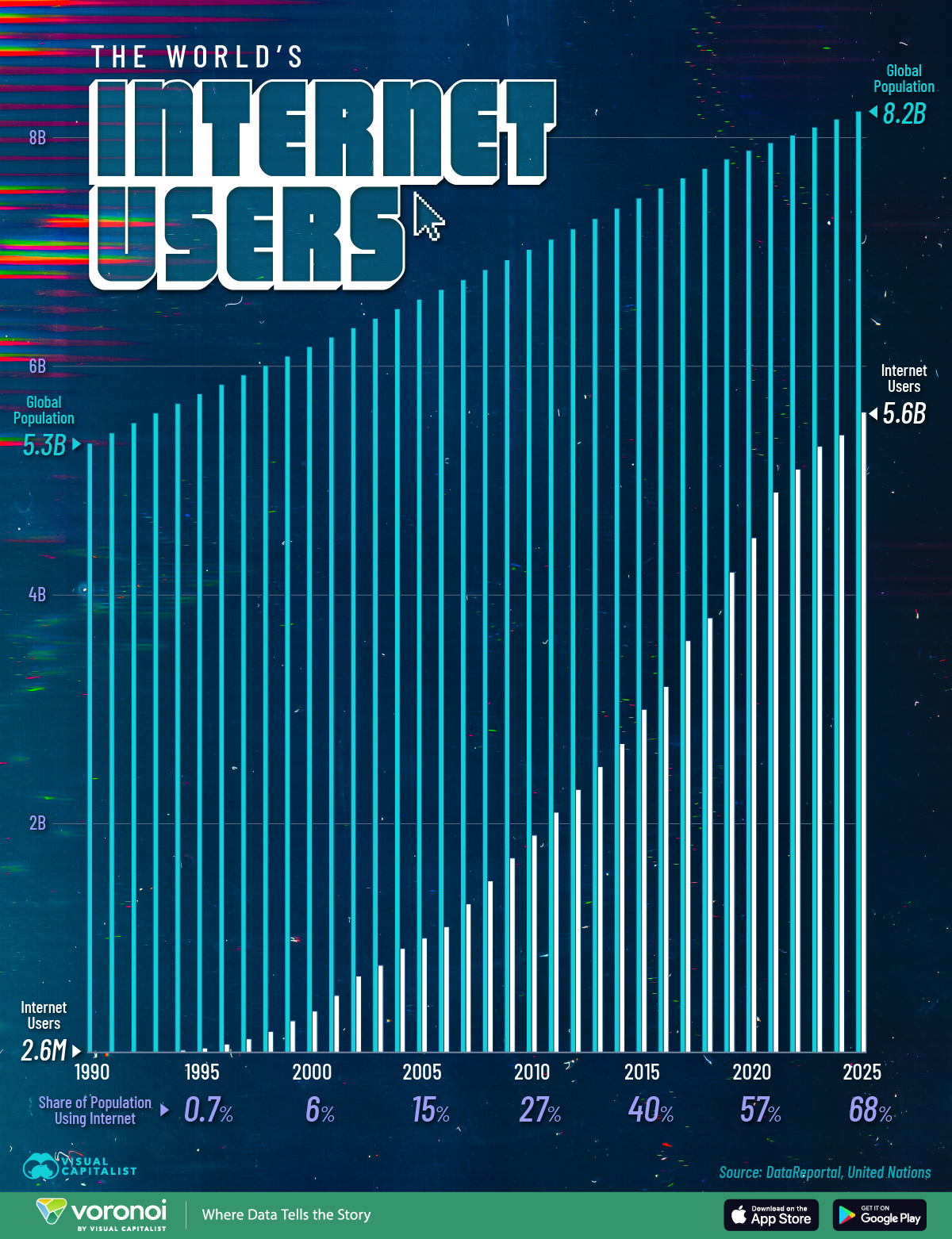![]()
See this visualization first on the Voronoi app.

Use This Visualization
Visualized: The Growth of Global Internet Users (1990–2025)
This was originally posted on our Voronoi app. Download the app for free on iOS or Android and discover incredible data-driven charts from a variety of trusted sources.
In just over 30 years, the internet has transformed from a niche academic network into the foundation of modern communication, commerce, and knowledge.
While internet adoption is now widespread, how has it evolved over time, and just how many people are online today?
This infographic highlights the number of global internet users from 1990 to 2025, using data from the Digital 2025 Report by DataReportal and population data from the United Nations.
Global Internet Adoption Over Time
While the internet is considered to have been “born” in 1983, it became accessible to the public in 1989, when Tim Berners-Lee created the World Wide Web.
As a result, the early 1990s marked the dawn of internet usage. The world’s first website was published in 1991, with just 0.1% of the global population online.
Here’s how the number of global internet users has evolved from 1990 to 2025, and how that compares to the global population:
| Year | Internet Users | Share of Global Population on the Internet |
|---|---|---|
| 1990 | 2.6M | 0.05% |
| 1995 | 39.2M | 0.7% |
| 2000 | 361M | 6% |
| 2005 | 1.0B | 15% |
| 2010 | 1.9B | 27% |
| 2015 | 3.0B | 40% |
| 2020 | 4.5B | 57% |
| 2025 | 5.6B | 68% |
By the beginning of the 21st century, internet usage had crossed 361 million people (6% of the population in 2000), and the momentum only accelerated from there.
The internet was pivotal for many of the technological shifts and tools developed over the last three decades. In turn, hardware innovations like smartphones enabled more people to go online, with 96% of users accessing the internet via mobile phones in 2025.
In addition to smartphones, falling data costs and rising network coverage further boosted internet usage. By 2015, 3 billion people were using the internet—around 40% of the global population at the time.
Ten years later, in 2025, that figure has nearly doubled, with 5.6 billion internet users who make up 68% of the global population. Yet, even today, 2.6 billion people remain unconnected to the internet.
The Next Wave of Internet Users
In the era of artificial intelligence, internet access is more vital than ever, serving as the primary gateway to AI-powered tools. That’s in addition to the innumerable tools and services the internet already has to offer.
The next billion internet users are likely to come from less-developed regions, where the digital divide is particularly concentrated. For example, in Africa, just 38% of the population uses the internet, compared to 87% in the Americas and 91% in Europe.
The difference is starker when we compare regions by income levels. Across all high-income countries globally, 93% of the population is online, compared to just 27% in low-income countries.
However, new technologies like satellite internet are enhancing internet access globally, although affordability remains a key concern.
Learn More on the Voronoi App ![]()
Learn more about satellite internet technology in this infographic comparing Internet Satellite Constellations, on the Voronoi app.